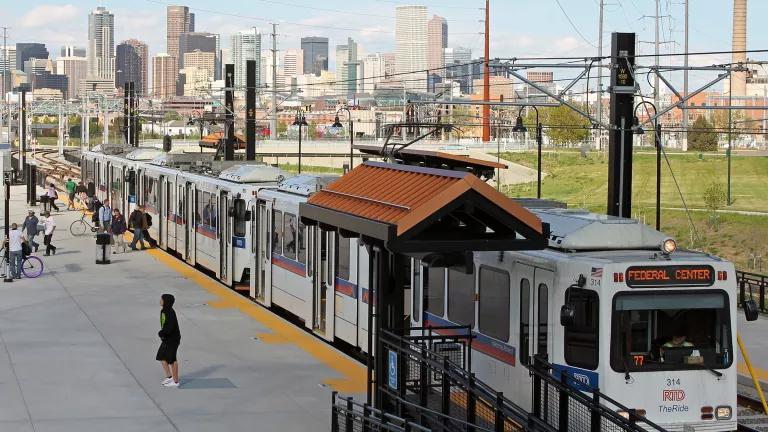Cities Need to Look Back in Order to Move Forward

In city after American city, the stories are similar—once-thriving communities were “redlined” out of existence or relegated to a lesser status that meant disinvestment, displacement, environmental degradation, segregation and lack of opportunity.
Many cities are only now beginning to understand the impact of past investment as they face growing social, economic, technological and environmental pressures that are pushing them to a tipping point.
As they advocate for building and fixing their physical assets—despite a lack of leadership in Washington—the smartest cities know they must overcome parts of their history to succeed. They must define success, not just in economic terms, but in finding their footing in adapting to and becoming resilient in the face of climate change effects like flooding, extreme heat and cold, and increased asthma and other health problems for their citizens.
Those of us in the community revitalization business need to understand the context and implication of these connections as well, particularly, as many Americans return to the cities they once abandoned—displacing the very people who were left behind.
The problem is bigger and older than we thought
The systemic structure of segregation and economic inequality may be older than we thought. A new study by the National Community Reinvestment Coalition (NCRC) finds the same neighborhoods that were labeled “hazardous zones” and “redlined” by the government-sponsored Home Owners Loan Corporation (HOLC) in the 1930s are the ones most persistently suffering today from inequality and lack of investment. A comparison of the redlined areas on the map to today shows “a pervasive, enduring structure of economic disadvantage in urban areas of the U.S.,” the study concludes.
These zones were created as part of a post-Depression era effort to give banks and other lenders information for offering loans but they relied at least in part on racial data, deeming predominantly African-American neighborhoods risky investments. The result was that the federal government literally encouraged the withholding of credit from older urban neighborhoods, immigrant communities and neighborhoods of people of color.
Such communities—many of which thrived as a result of close-knit ties and local entrepreneurship—weren’t part of the nation’s economic engine. The NCRC study reveals, in fact, that three out of four of the neighborhoods marked “hazardous” by the HOLC are struggling economically 80 years later, and the majority are highly segregated.
At the same time, another study just out—What We Get Wrong About Closing the Racial Wealth Gap by researchers at Duke University’s Samuel DuBois Cook Center on Social Equity—shows that blacks, while constituting just under 13 percent of the nation’s population, own less than 3 percent of the nation’s total wealth.
The Duke researchers found that even when blacks and whites had similar educational achievement and employment, black families still lagged significantly behind in financial holdings because of the long history of lack of access to resources and challenges to wealth accumulation over time.
When we talk about systemic racism in community development, it’s important to acknowledge that hard work alone is not enough to lift people out of poverty when there is lack of access to opportunity.
How it manifests on the ground
Southern cities were among the worst victims of endemic racism, with communities displaced and divided by planning that did not take African Americans’ interests into account. The neighborhood around Claiborne Avenue in New Orleans, for example—once one of the most thriving African American communities in the country—went into stark decline with the building of a freeway, and now the city is working on a redevelopment plan to include public spaces, green infrastructure and improvement of quality of life.
Austin, too, is in the midst of marking the 90th anniversary of its 1928 segregation plan by being a part of the PolicyLink All-In Cities Anti-Displacement Policy Network—an effort to fight the displacement of African Americans from some of the very same neighborhoods in which they were relegated to live by racist policies and lending rules.
We, as well, with our Strong, Prosperous, And Resilient Communities Challenge, are increasingly focusing on displacement as revitalization threatens to raise housing costs and fail those who have stuck it out in previously disinvested neighborhoods. We have found in Memphis, for example, that Step One must be rebuilding trust between the city, stakeholders and the community.
The environmental connection
You might think that when we talk about trying to look back at history and fix systemic racism in land use—and the resulting segregation—that we’re talking about improvements for one segment of the population. But that’s not true, as The New York Times recently pointed out in a piece marking the recent anniversary of the death of Martin Luther King Jr.
What King knew and the data now show is that segregation hurts everyone, threatening our financial health, breeding social divisiveness and reducing our moral stature domestically and internationally. It also hurts us environmentally, as the Times and many of my colleagues have spent lifetimes pointing out, because as a society we’ve seen it as okay to put polluting power plants, freeways, landfills, factories and shipping facilities in black and Hispanic communities. This exacerbates the effects of pollution for everyone, rather than creating a broad movement for policy reform to combat climate change, and it further contributes to an unequal society, which may result in less investment in environmental policies and research.
We may have once thought that revitalizing underserved neighborhoods with public transit, more open space and climate-resilient infrastructure would be enough to make them healthier, more vibrant, and thriving places. But we now realize we forgot to ask the people already living there what they wanted and needed and how they could take advantage of improvements—not be forced out by them.
Solving the displacement issue and its underlying causes will go a long way toward healing so many of the challenges our cities—indeed, our country—face today. Cities and communities will need to address how decisions and investments are made in order to move our nation forward.



